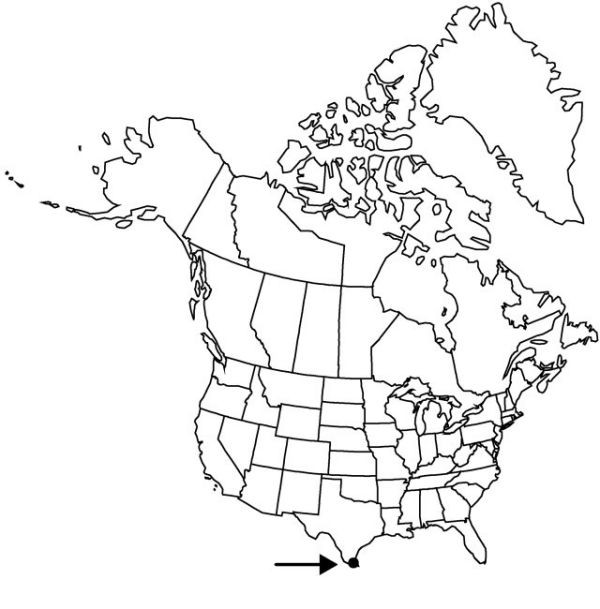Manfreda variegata
Contr. U.S. Natl. Herb. 8: 20. 1903.
Rhizomes globose. Leaves erect-arching, succulent, 14–45 × 1–2.7 (–3.9 in cultivated specimens) cm; blade sometimes spotted with elongate brown or green markings, sometimes glaucous, deeply channeled, linearlanceolate, margins usually with small, distantly spaced teeth. Scape 4.7–10.8 dm (–13.3 in cultivation). Inflorescences lax, (0.75–) 1.4–2.9 dm (–4.8 dm in cultivation), bearing 7–41 distantly spaced flowers. Flowers sessile, spreading, with cooked onion odor; tepals green or mahogany brown; perianth-tube broadly funnelform-campanulate, 0.6–1.6 cm; limb lobes recurved, yellowish green or brownish, (0.6–) 0.9–1.6 cm; filaments widespreading at maturity, bent near middle in bud, exceeding tube by 3–6.5 (–8.2) cm; ovary 9–19 mm; style ± equal to stamens; stigma pale green or brownish, clavate-triangular, 3-angled, furrowed apically, lobes not reflexed. Capsules globose to cylindrical, 1.6–1.8 (–2.5) × 1.3–1.6 cm.
Phenology: Flowering Feb–Jun; flowering period of inflorescences extending up to 40 days; fruiting early summer–mid fall, ca 75 days after flowering begins.
Habitat: Dry chaparral or moist situations, on rocky slopes, open or dense oak woods in Mexico
Elevation: 0–2000 m
Distribution

Tex., Mexico (Nuevo León), Mexico (San Luis Potosí), Mexico (Tamaulipas), Mexico (and s along e Sierra Madre Oriental to Veracruz), Mexico (Yucatán)
Discussion
Manfreda variegata is occasionally cultivated as an ornamental (S. E. Verhoek 1978).
Selected References
None.
Lower Taxa
"thick" is not a number. "thin" is not a number."dm" is not declared as a valid unit of measurement for this property."dm" is not declared as a valid unit of measurement for this property. "dm" is not declared as a valid unit of measurement for this property."dm" is not declared as a valid unit of measurement for this property.